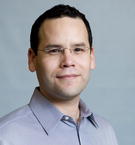Biomarker Discovery Lab


Contact Information
Biomarker Discovery Lab
Please contact the Biomarker Discovery Lab via:
Linda Nieman, PhD
lnieman@mgh.havard.edu
Tel: 617-643-9684
Explore the Biomarker Discovery Lab
Overview
The emergence of scalable analytical technologies has generated significant interest in applying these platforms to translational projects focused on human tissue specimens. This has included new multiplexed protein and RNA staining assays applicable to clinical grade FFPE material for a variety of clinical and scientific questions that are of importance to Mass General Cancer Center investigators. These changes in the landscape of clinical oncology and biomarker technologies has created the need to provide a new research infrastructure for clinical and laboratory based investigators to perform translational science. The Biomarker Discovery Lab aims to meet these evolving needs and provide a resource for both clinical and basic science researchers at the Mass General Cancer Center.
Mission
The mission of the Mass General Cancer Center Biomarker Discovery Lab is to be a center of excellence for the development and application of cutting edge technologies that will enable our physicians to make more sophisticated and potentially life-saving treatment decisions.
A Collaborative Resource
The Biomarker Discovery Lab is formed under the direction of Miguel Rivera, MD, David Ting, MD, and Vikram Deshpande, MD. The lab has access to human tissue samples, tissue staining by IHC/IF or RNA-ISH, and molecular analysis with next generation sequencing.
The Biomarker Discovery Lab also works collaboratively with the DF/HCC Pathology Core to help investigators execute more routine IHC/IF stains. In addition, the Biomarker Discovery Lab works closely with the Translational Research Lab on potential molecular or tissue based biomarkers that appear to be clinically important to transition into a CLIA setting.
The Biomarker Discovery Lab is designed to provide a collaborative resource that can provide expertise and services on tissue acquisition, preparation, specialized histological stains, and high end digital microscopy quantitative analysis.
Infrastructure Resources
Existing Leica Bond RX automated IHC/RNA-ISH staining platform, Leica automated cover-slipper, one Vectra 2 MSI imaging systems (with Stott lab), 1 Aperio brightfield scanner, 2 Illumina MiSeq, and 1 Illumina NextSeq are existing resources for the lab. Image analysis platforms Visiopharm and Halo have been purchased and provide a range of capabilities for researchers. Data infrastructure include a local server (NetApp FAS8020 NAS) with 576 TB total storage space and data protection using Snapshot technology.
Meet the Team
Scientific Directors

Miguel Rivera, MD
Miguel Rivera MD is a molecular pathologist and translational researcher with significant expertise in the development and application of molecular diagnostics. He co-directs the technical operation of tissue based analysis and sequencing with David Ting.

David Ting, MD
David T. Ting MD is a translational cancer researcher with experience in tissue image analysis and next generation sequencing. He provides administrative oversight and directs the technical operation of image analysis with Linda Nieman and next generation sequencing applications with Anna Szabolcs.

Vikram Deshpande, MD
Vikram Deshpande MD is an anatomic pathologist with significant experience in biomarker development. He is director of the MGH Pathology Tissue Bank and the Tissue Microarray (TMA) Core facility. He coordinates all tissue acquisition, construction of TMA, and provides histological review.
Tissue Bank Team
Azfar Neyaz, MD
Azfar Neyaz, MD is an experienced anatomic pathologist who assists with tissue acquisition, tissue staining, and histological analysis for all projects. Under the guidance of Dr. Deshpande, he acquires human tissues and assembles tissue microarrays for a wide variety of projects across the Cancer Center.
Tissue Staining Analysis Team

Linda Nieman, PhD
Linda Nieman, PhD is the Technical Director for Imaging and Analysis with a PhD in Physics specializing in optical approaches to understand disease and response to therapy. Over the last 5 years, Dr. Nieman has provided essential expertise in the management of all microscopy platforms at the MGH Cancer Center including multispectral imaging, digital whole slide scanning, and confocal microscopy. In addition, she has developed algorithms for digital microscopy analysis with Halo and Visiopharm to generate quantitative and spatial data from images of tissue slides stained for cancer biomarkers.

Anupriya Kulkarni, PhD
Anupriya Kulkarni, PhD is a post-doctoral researcher has operational oversight of the Leica BondRX for both IHC and RNA-ISH. She has over 3 years experience with automated staining platforms applicable for both laboratory based and clinical translational research projects.
Next Generation Sequencing Team

Anna Szabolcs, MD, PhD
Anna Szabolcs, MD, PhD is a staff scientist with post-doctoral research experience in cancer and molecular biology. She provides oversight of all next generation sequencing projects from the Biomarker Discovery lab.
Movies
Genomic Instability Is Induced by Persistent Proliferation of Cells Undergoing Epithelial-to-Mesenchymal Transition
The plasticity of EMT suggests that it is governed by reversible changes in gene expression. Comaills et al. show that persistent proliferation of cells undergoing EMT, through suppression of nuclear envelope proteins, triggers mitotic defects culminating in genomic instability.
These findings highlight a mechanism by which microenvironment-derived signals induce heritable effects. Images courtesy of Val Comaills, PhD.
Images
Cluster of circulating human breast cancers cells isolated from peripheral blood.
Cell nuclei are show in blue, cytokeratin in green, EpCAM and HER2 shown in yellow / orange.

Multispectral image of human FFPE tissue labeled with 7 different fluorescent biomarkers.
Image courtesy of Joao Paulo Oliveira-Costa, DDS, PhD.

High-plex multispectral fluorescence image of FFPE human tissue with overlay showing cell segmentation and phenotype.
This type of analysis provides critical contextual information regarding cell-cell interaction and cell-tissue organization. Image courtesy of Joao Paulo Oliveira-Costa, DDS, PhD.

Tumor Gland. Representative images of dual-color tissue RNA-ISH of primary human pancreatic ductal adenocarcinomas (PDACs).
Stained for PRO marker MKI67 (Ki67) and EMT marker FN1. Representative image analysis of tumor glands using quantitative digital pathology software to score single cancer cells in distinct cell phenotypes: DP (Ki67+/FN1+), EMT (-/FN1+), PRO (Ki67+/-) and DN (-/-). Image: Matteo Ligorio, MD, PhD.

Leukocytes (shown in red) attacking a cancer cell (shown in green / yellow).
Cell nuclei are shown in blue.

Stroma Quantification
Tissue microarray (TMA) from human primary pancreatic ductal adenocarcinoma (PDAC) tumors. Dual-color RNA-ISH staining for cytokeratins (blue) and SPARC gene (red). Digital image analysis quantifies amount of stroma (SPARC) in PDAC tumor core. Image courtesy of Matteo Ligorio, MD, PhD.

Human prostate cancer cell isolated from peripheral blood.
Cell nucleus is shown in blue, cytokeratin in green, PSA in magenta.

Krantz Family Center for Cancer Research
The scientific engine for discovery for the Mass General Cancer Center.
participated in Clinical Trials at the Mass General Cancer Center last year
This helped lead to new knowledge and breakthrough therapies.
Contact the Cancer Center
Contact the Mass General Cancer Center to make an appointment or to learn more about our programs.
